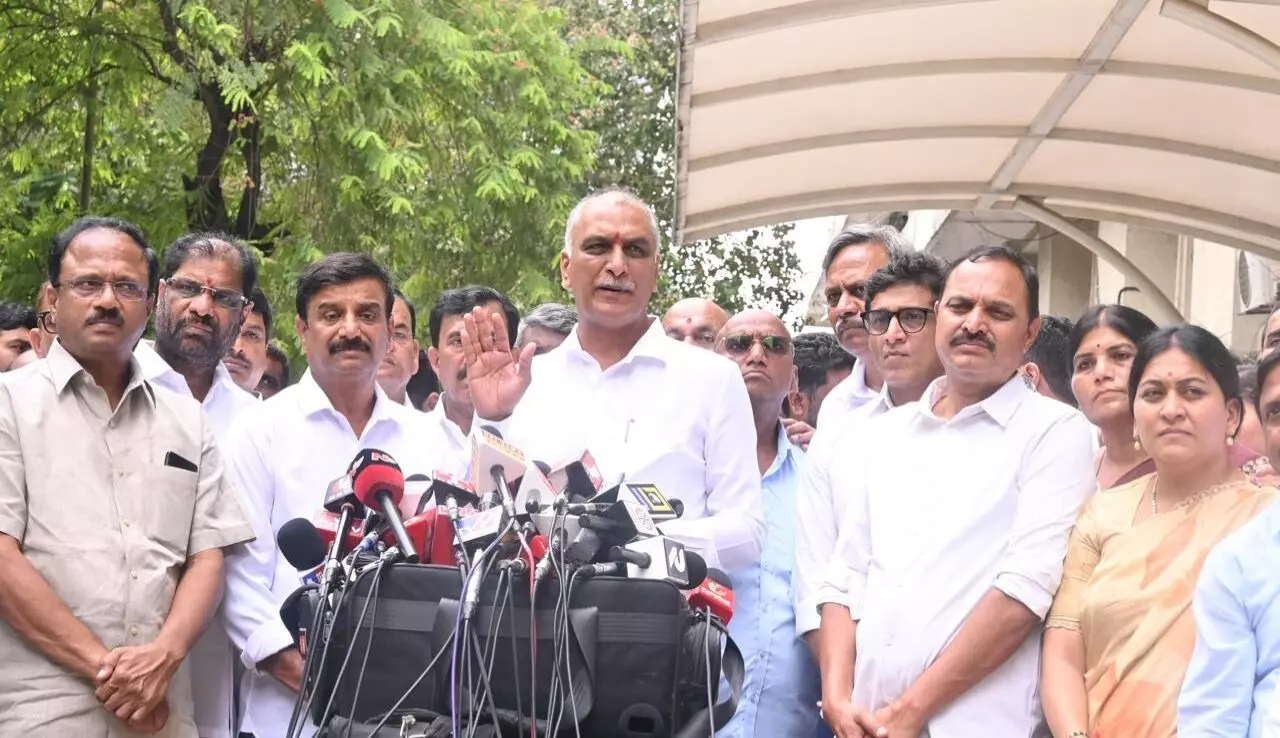Kaleshwaram project: Harish says environmental hurdles, Maharashtra’s rules behind Medigadda choice
Harish Rao appeared before the Justice PC Ghose Commission probing the alleged discrepancies in the construction of KLIP
By Sistla Dakshina Murthy
Kaleshwaram project: Harish says environmental hurdles, Maharashtra’s rules behind Medigadda choice
Hyderabad: Former Irrigation Minister and BRS leader T Harish Rao on Monday explained then State government’s reason for the relocation of the Kaleshwaram Lift Irrigation Project’s (KLIP) water intake point from Tummidi Hatti to Medigadda.
Harish Rao appeared before the Justice PC Ghose Commission probing the alleged discrepancies in the construction of KLIP, which has led to damage to the barrage.
Maharashtra’s opposition and water constraints
The former minister claimed that the shift was driven by critical factors such as Maharashtra’s resistance, environmental restrictions and water availability issues, rejecting allegations of political motives or mismanagement.
Speaking to media persons at BRK Bhavan after appearing before the commission on Monday, Harish Rao explained that Maharashtra’s refusal to approve the Full Reservoir Level (FRL) of 152 metres at Tummidi Hatti, limiting it instead to 148 metres, significantly reduced the site’s water availability.
He referenced Central Water Commission (CWC) reports warning about inadequate water supply at Tummidi Hatti and recommending alternative storage solutions. This restriction rendered the original site unsuitable for the scale of the project.
Environmental challenges bring delays at the original site
Highlighting the environmental hurdles, Rao pointed to the Chaparral Wildlife Sanctuary near Tummidi Hatti, which posed substantial ecological challenges. These concerns stalled the project’s progress for nearly a decade, making it necessary to seek an alternate location that would mitigate such impacts.
Medigadda was a more scientific and strategic choice, says Harish
To address these constraints, Rao said the Central PSU WAPCOS conducted extensive surveys, including LiDAR mapping, that identified Medigadda as a more viable site. The new intake location enabled the construction of the Medigadda, Annaram and Sundilla barrages, which together provide 38 TMC of storage capacity, irrigating over 20 lakh acres. Rao emphasised that this decision was based on rigorous hydrological and scientific assessments.
Rao denies any political motives
Rao firmly dismissed claims of political interference, accusing the Congress government of spreading misinformation to undermine the project’s success. He highlighted the transparent formation of the Kaleshwaram Irrigation Project Corporation Limited (KIPCL), established with full cabinet approval to ensure timely execution and fund mobilisation.
Detailing the project’s scale, Rao noted it includes over 100 components, such as 16 major reservoirs with a combined capacity of 141 TMC.
He said that Kaleshwaram has stabilised irrigation across Telangana and significantly benefited millions of farmers. Rao concluded by asserting that all queries from the commission were addressed with comprehensive evidence from credible agencies like the CWC and WAPCOS.